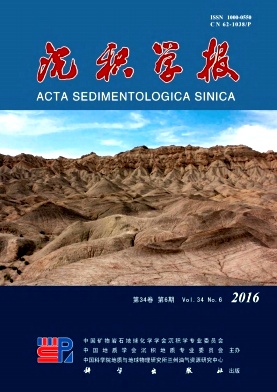Pyrolysis Simulation Experiment Study on Diagenesis and Evolution of Organic-rich Shale
doi: 10.14027/j.cnki.cjxb.2016.06.018
- Received Date: 2015-12-31
- Rev Recd Date: 2016-03-02
- Publish Date: 2016-12-10
-
Key words:
- shale /
- diagenesis process /
- simulation experiment
Abstract: It is well known that shale possess abundant hydrocarbon resources and therefore attracted more and more in the recent years. It is the fact that there are only a few researches have been conducted as reservoir instead of source rocks blocks the exploration as well as development of the shale oil and gas. In this study, we look into the diagenetic processes of shale and evolution by heat simulation experiment conduction. The shale sample of which the Ro is 0.7%, from lower section of Es3 in Jiyang depression and composed of calcite, quartz, clay, organic matters and other minerals, was divided into four pieces. Different temperatures(150℃, 200℃, 250℃, 300℃) was set to modify a series of stage of the diagenetic evolution process. The solution from the experiments was detected for ions and organic acids. And the rock samples were observed under the SEM. The study shows that:①The content of organic acids increased with the rising temperature and it suggests that a relatively wide organic acid generated window which affects pore fluid features, exists in the period of organic matter thermal evolution. ②Even though feldspar and calcite are main soluble minerals in the sample, different dissolution process was observed both by the ion detection and by the SEM-observation. Feldspar is easier to be dissolved while the dissolution of calcite always goes after. The study also shows a narrow calcite dissolution window followed by its re-deposition happened during 200℃~250℃. ③The fine-grained quartz released from the clay mineral reaction smectite-illite transformation within the micropores of the shale precipitated as 1~3 μm sub-spherical discrete grains, short chains, and small clusters interpreted to be parts of larger interconnected microquartz networks and interlocking aggregates of several microquartz and authigenic clay (illite-smectite and illite)crystals. Shale formation can be seen as a closed system where various diagenesis are influencing each other to form a complex diagenesis system and result in more difficulties on diagenesis research.
| Citation: | LUAN GuoQiang, DONG ChunMei, MA CunFei, LIN ChengYan, ZHANG JinYing, LÜ, XiaFei. Pyrolysis Simulation Experiment Study on Diagenesis and Evolution of Organic-rich Shale[J]. Acta Sedimentologica Sinica, 2016, 34(6): 1208-1216. doi: 10.14027/j.cnki.cjxb.2016.06.018 |






 DownLoad:
DownLoad: